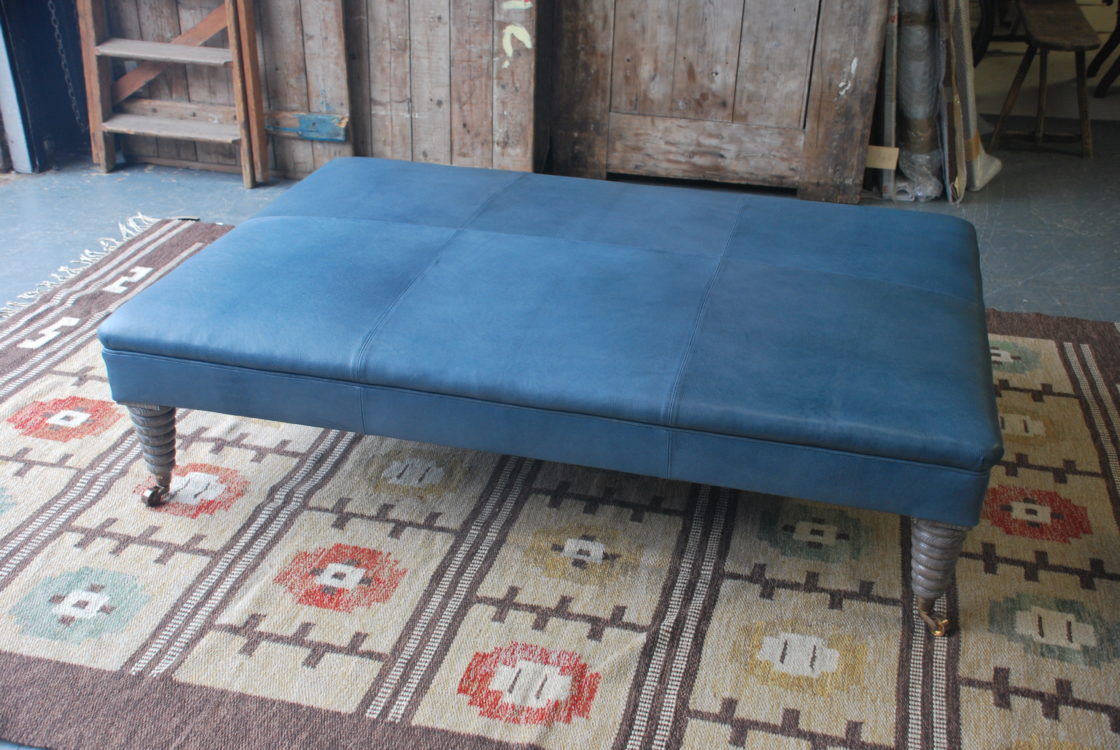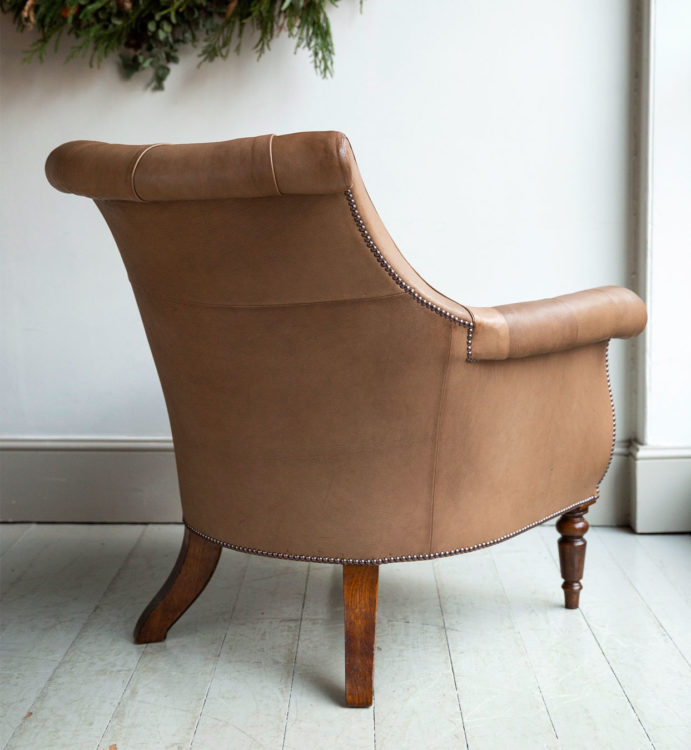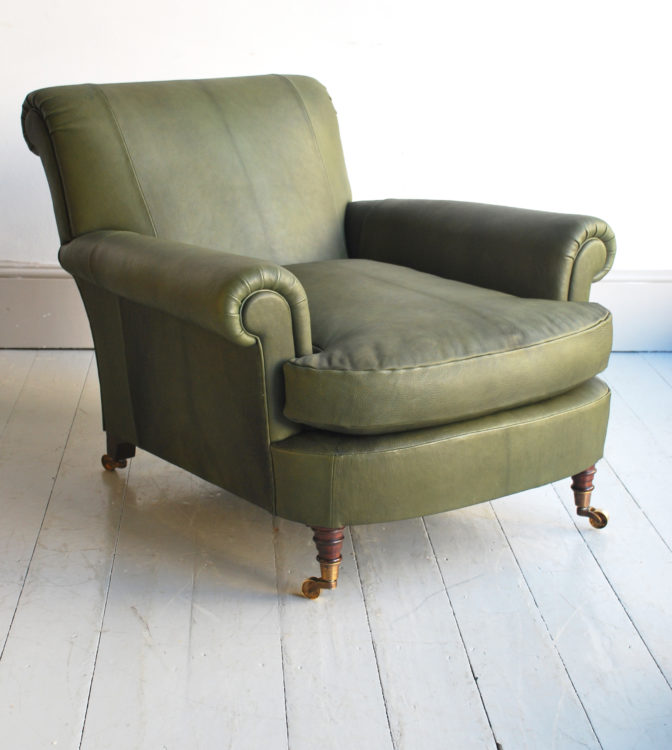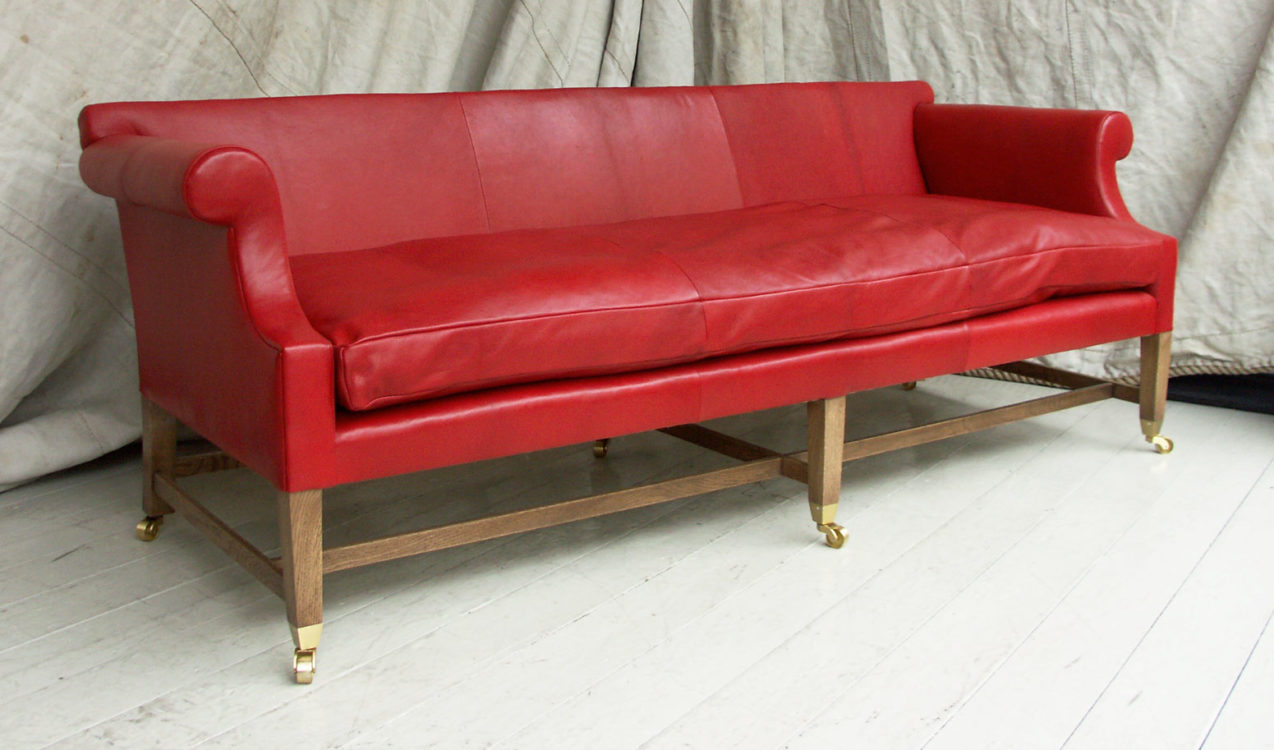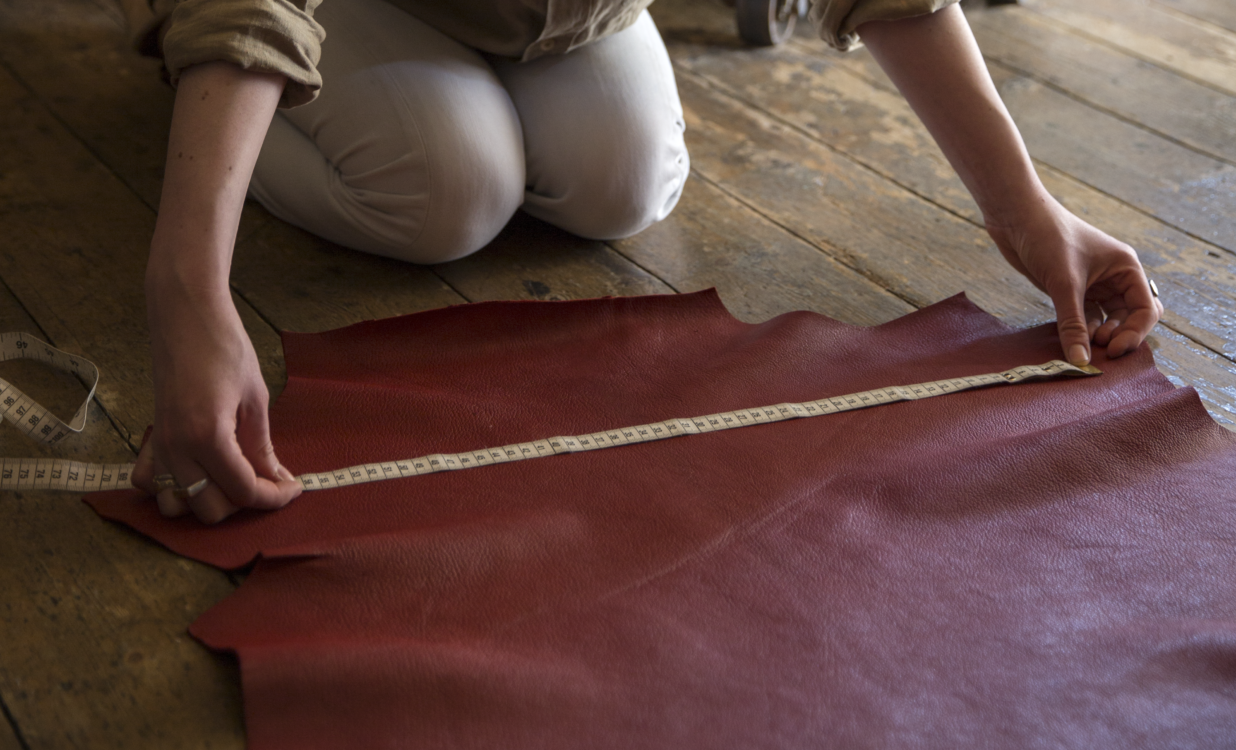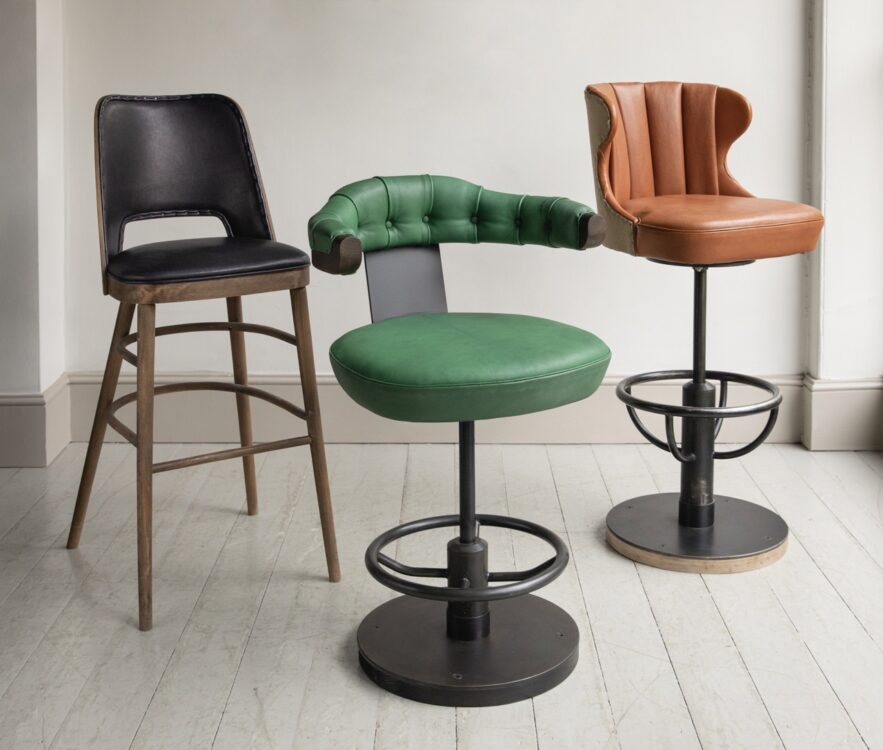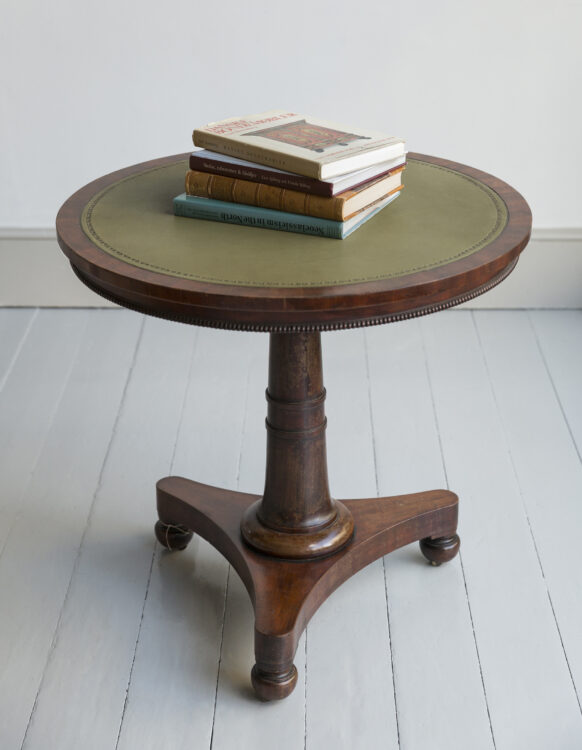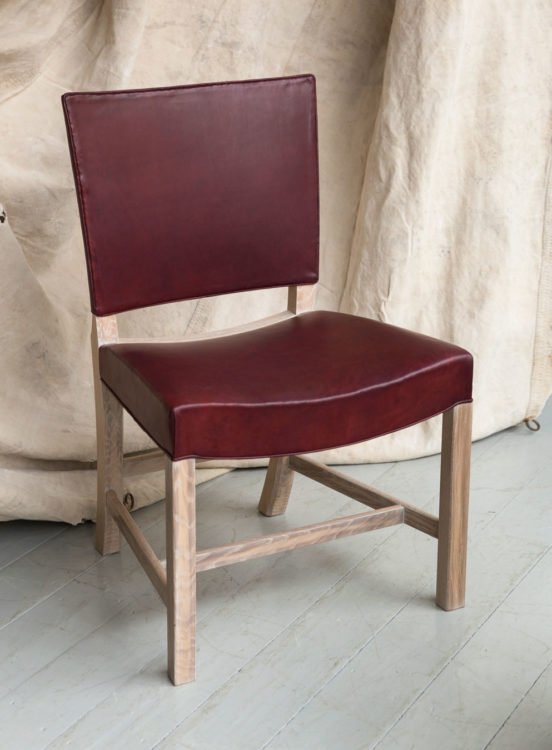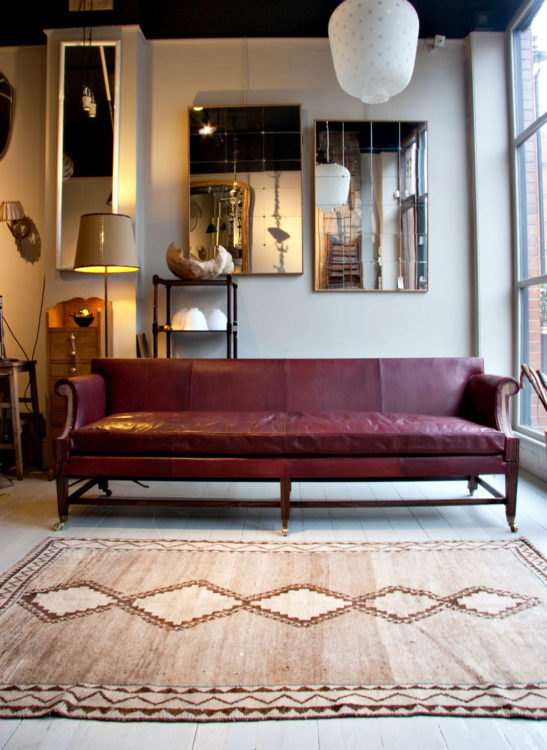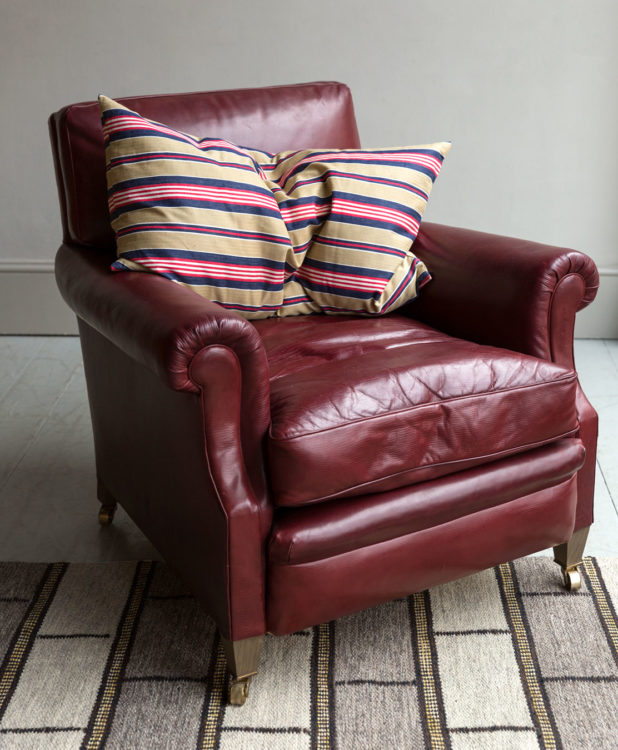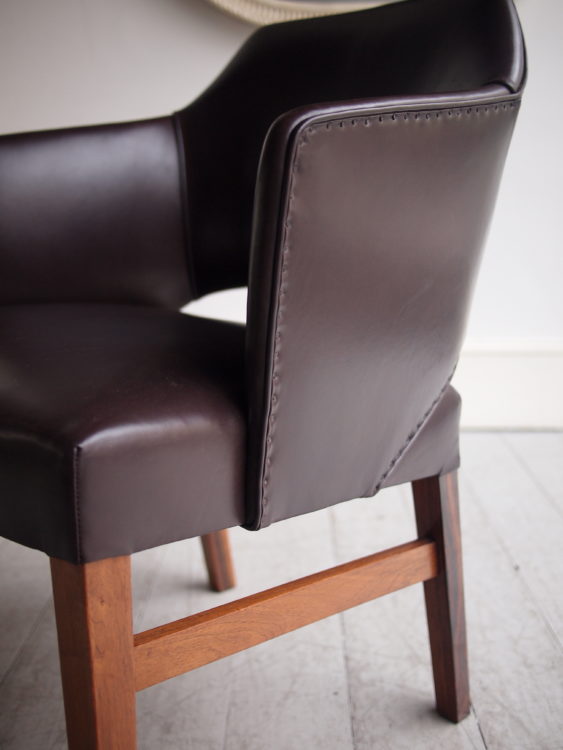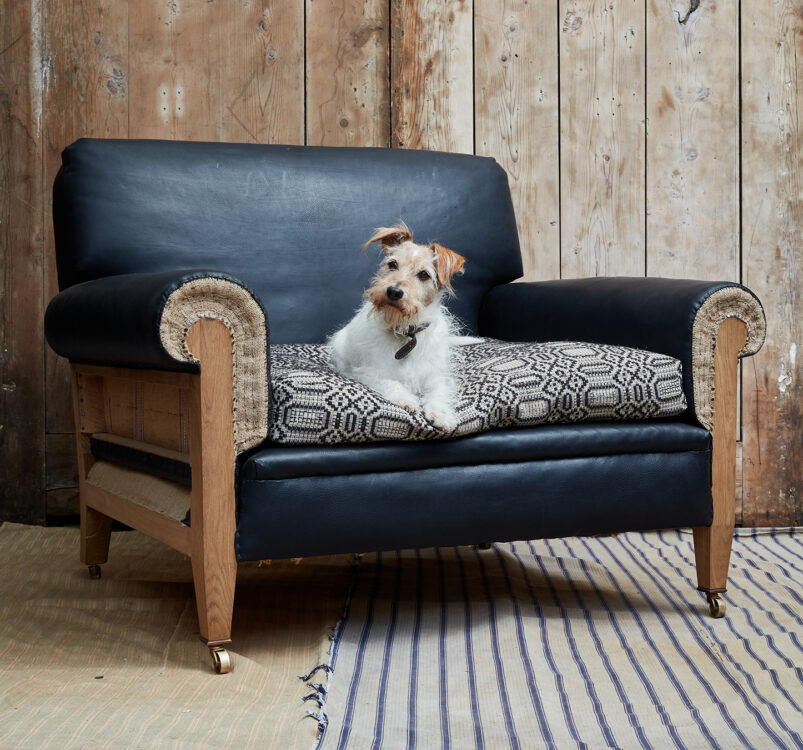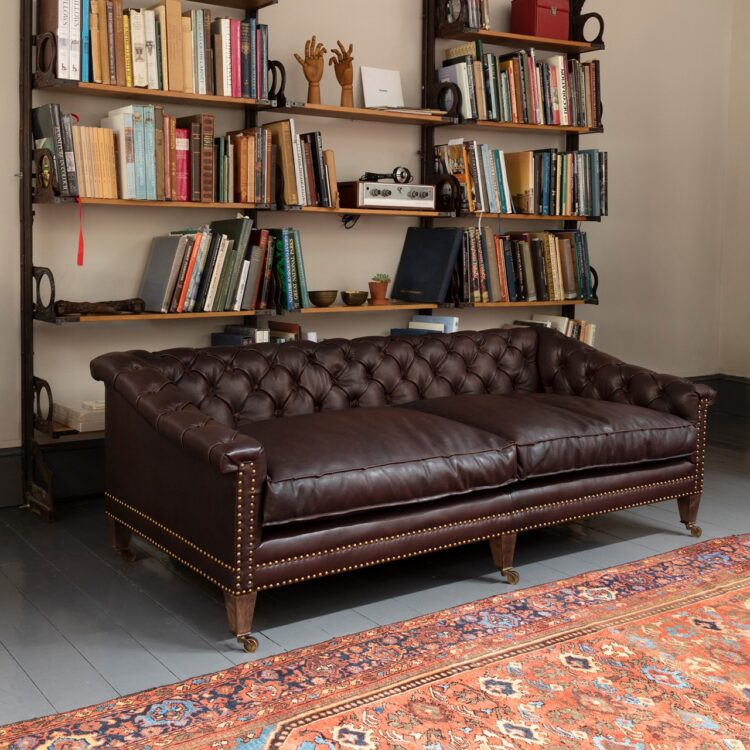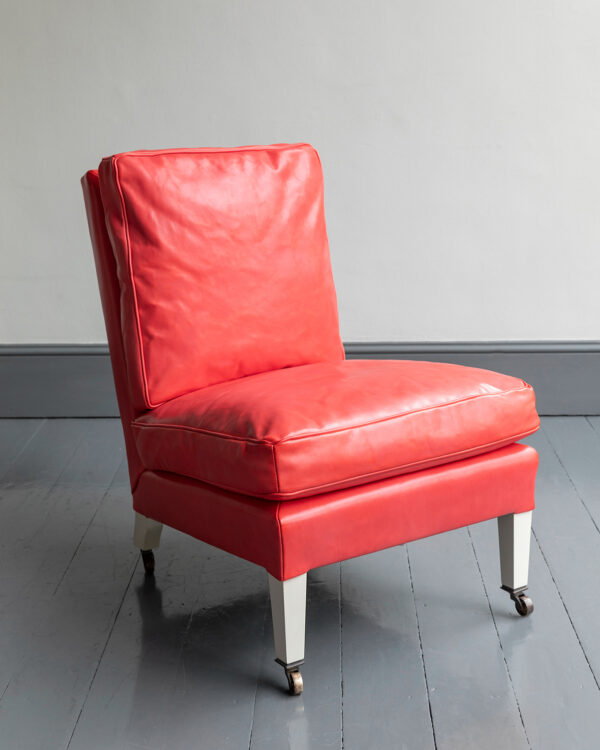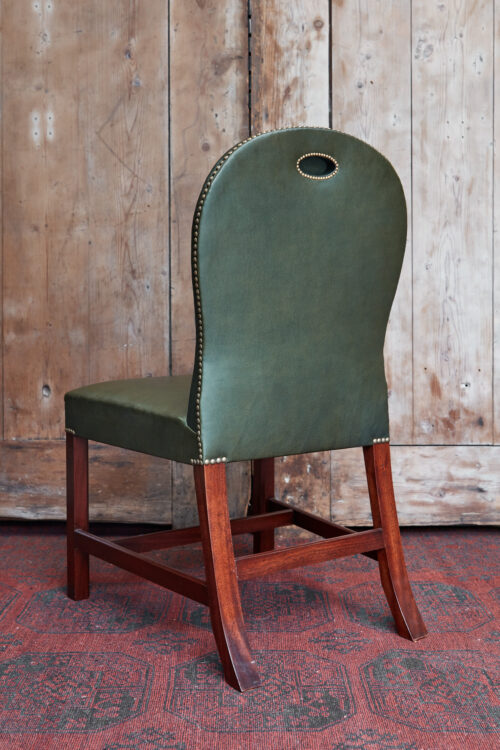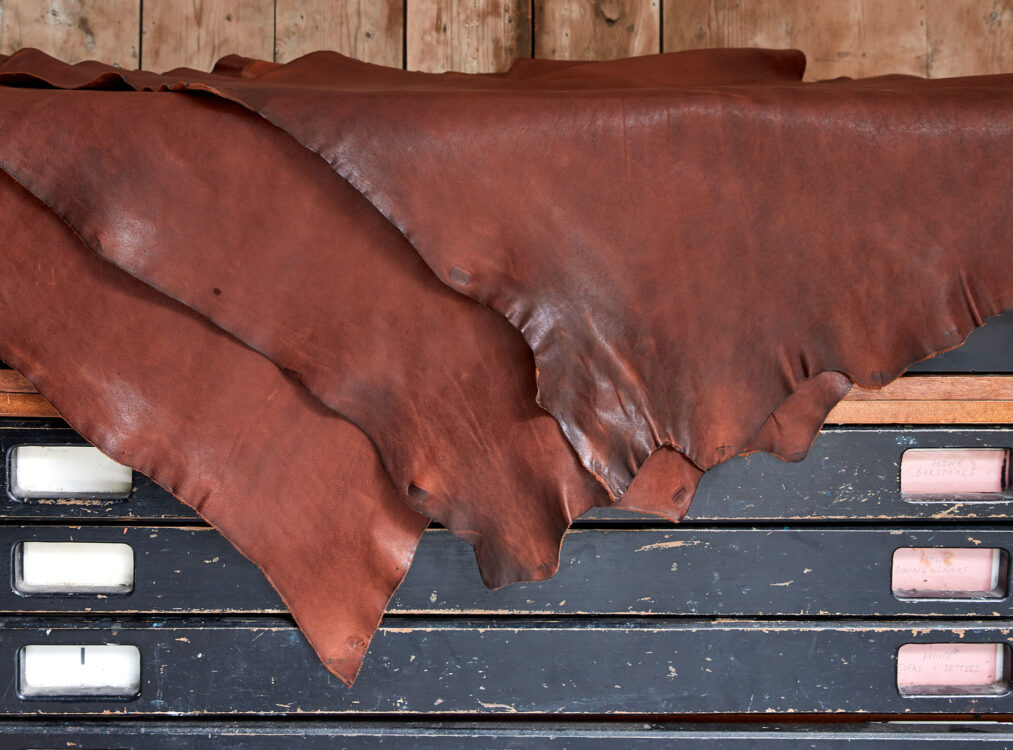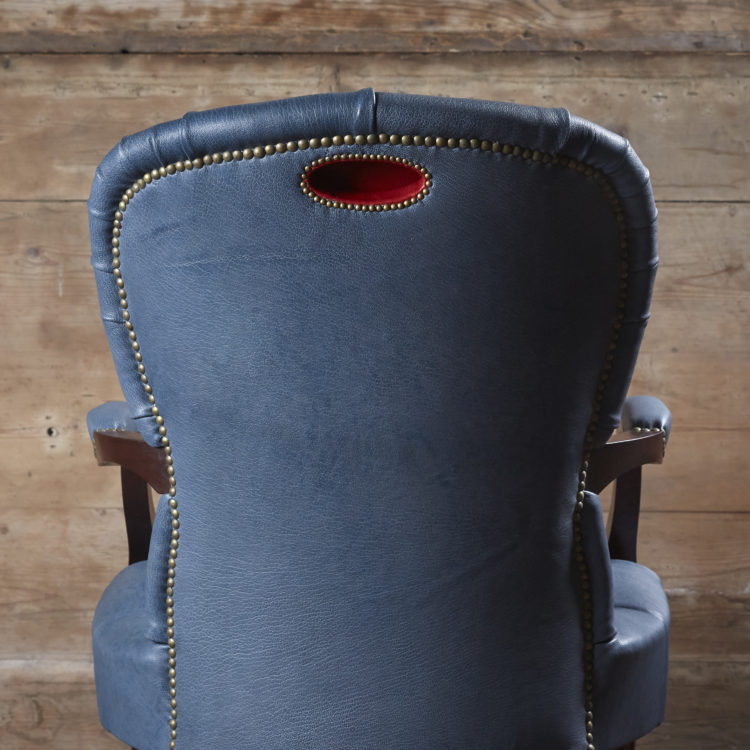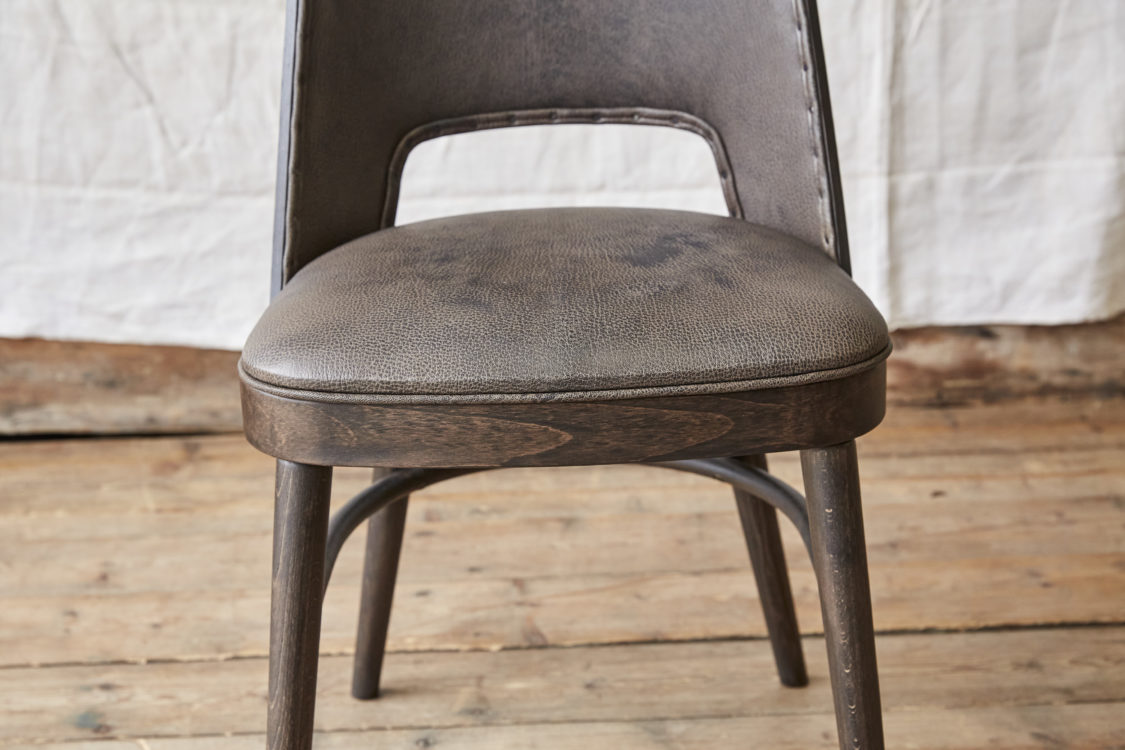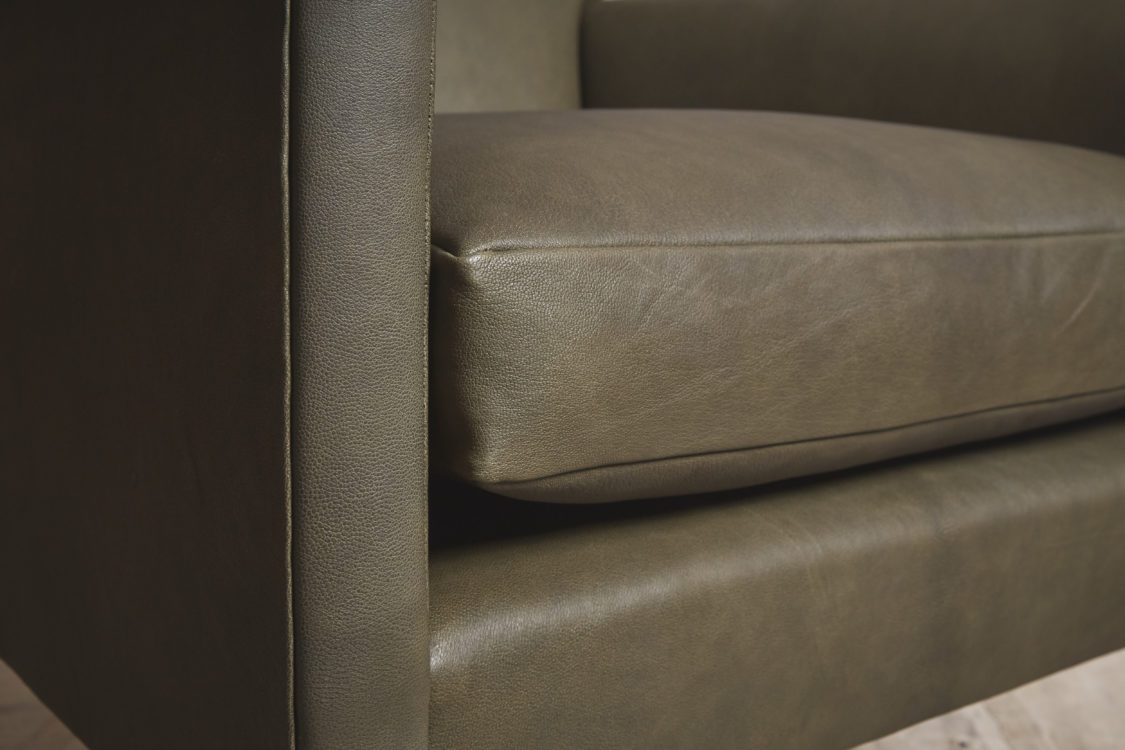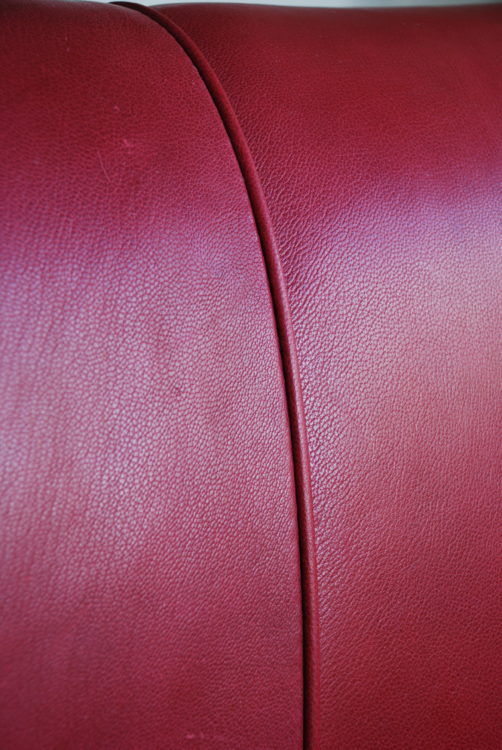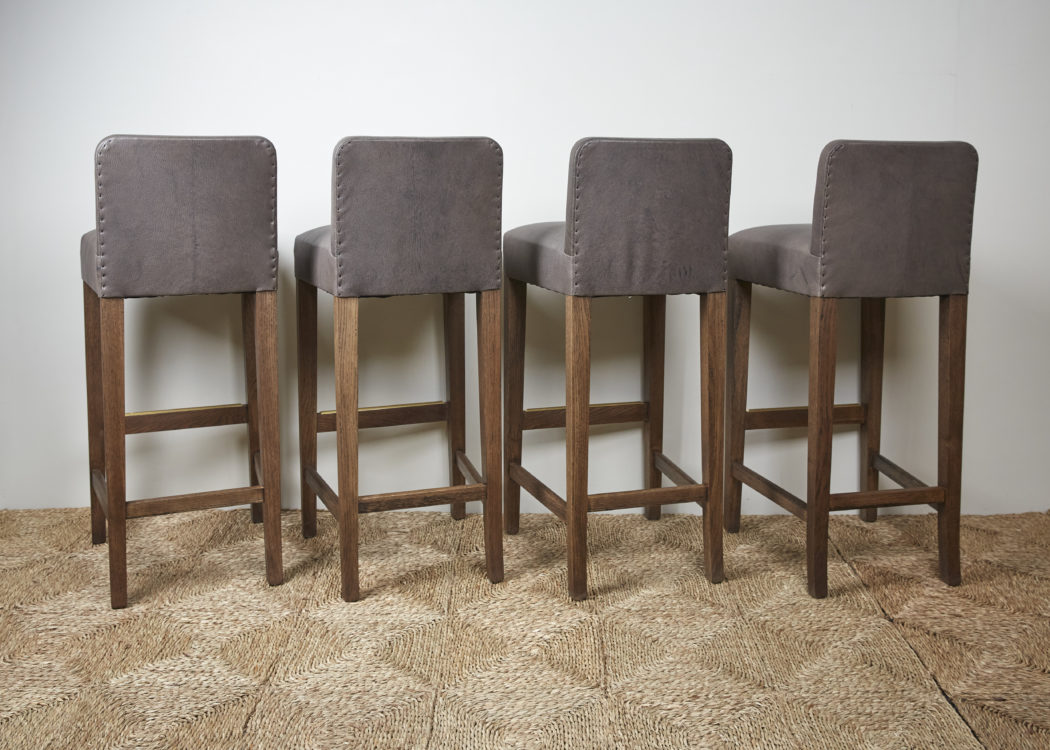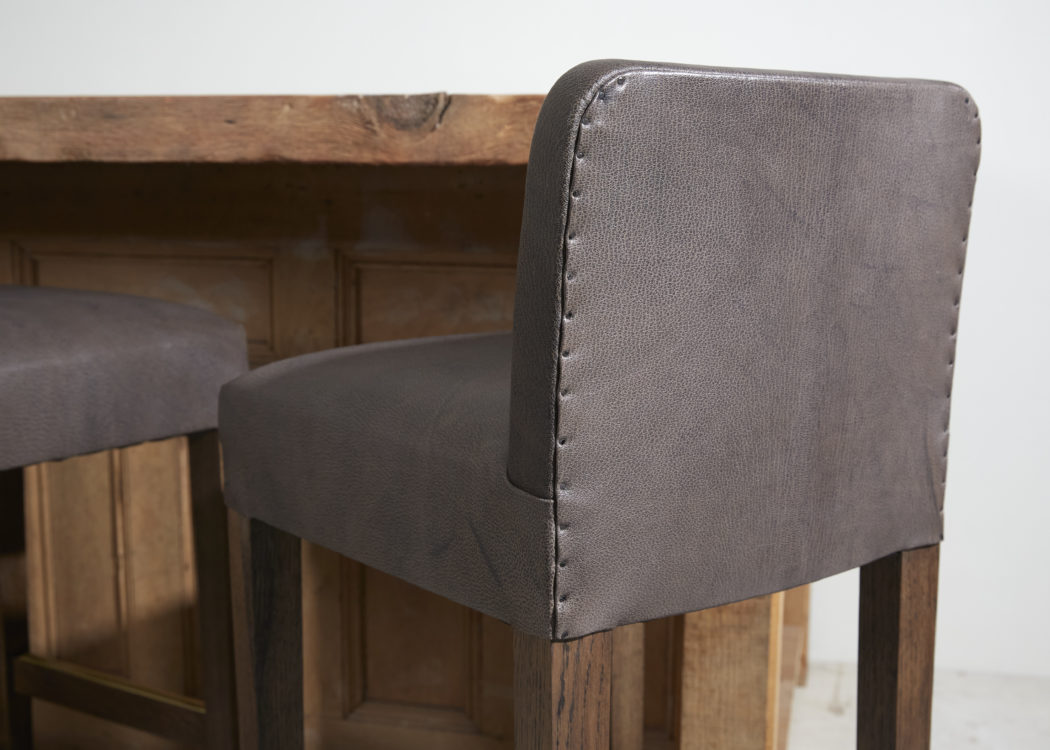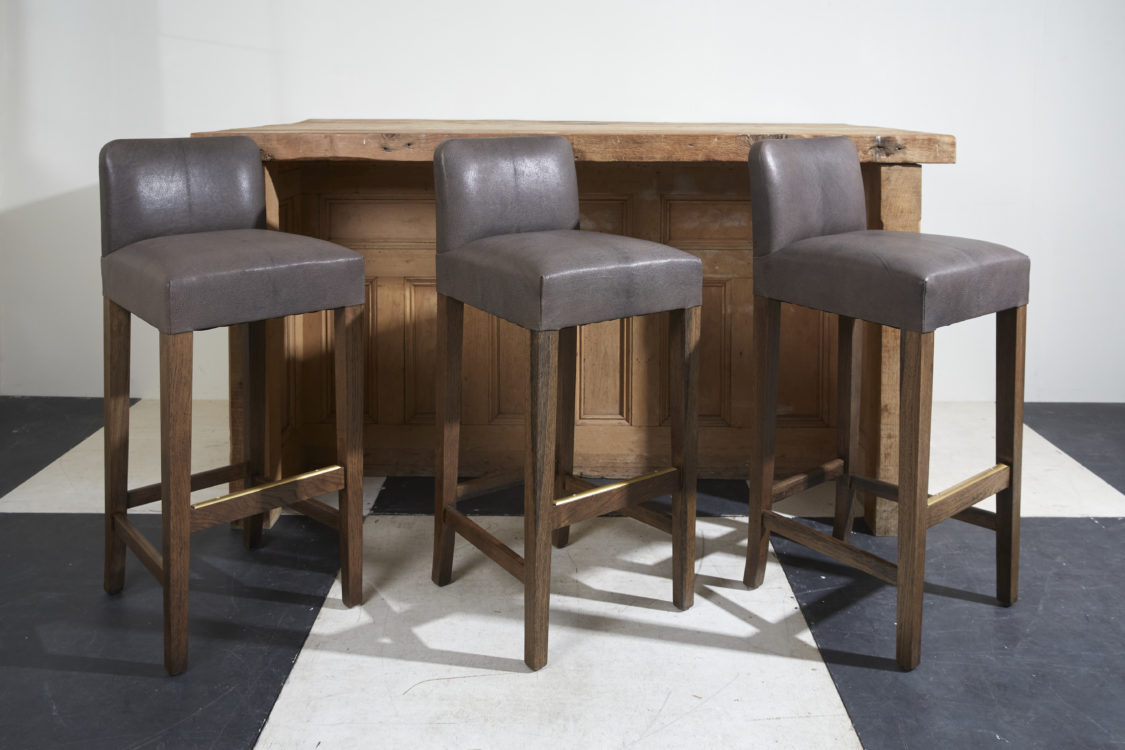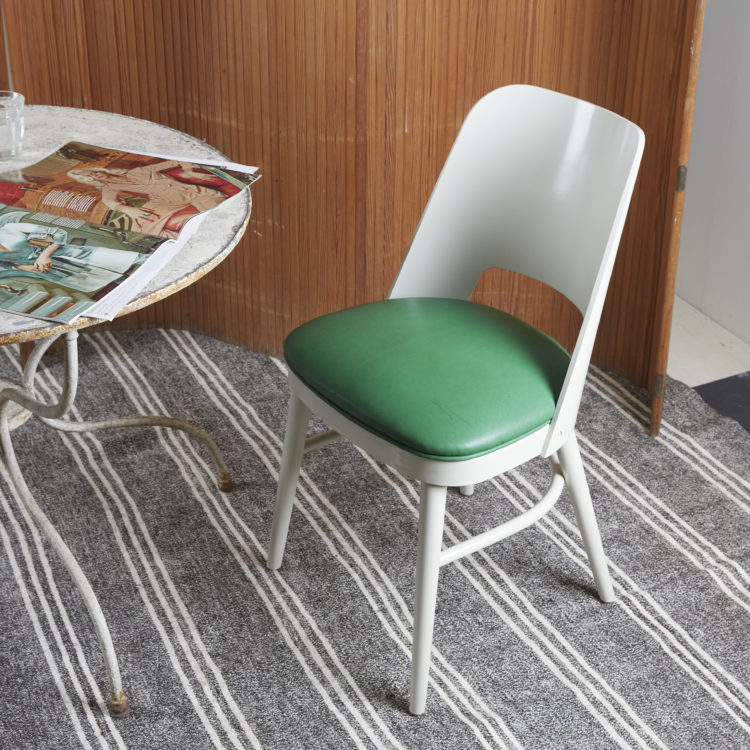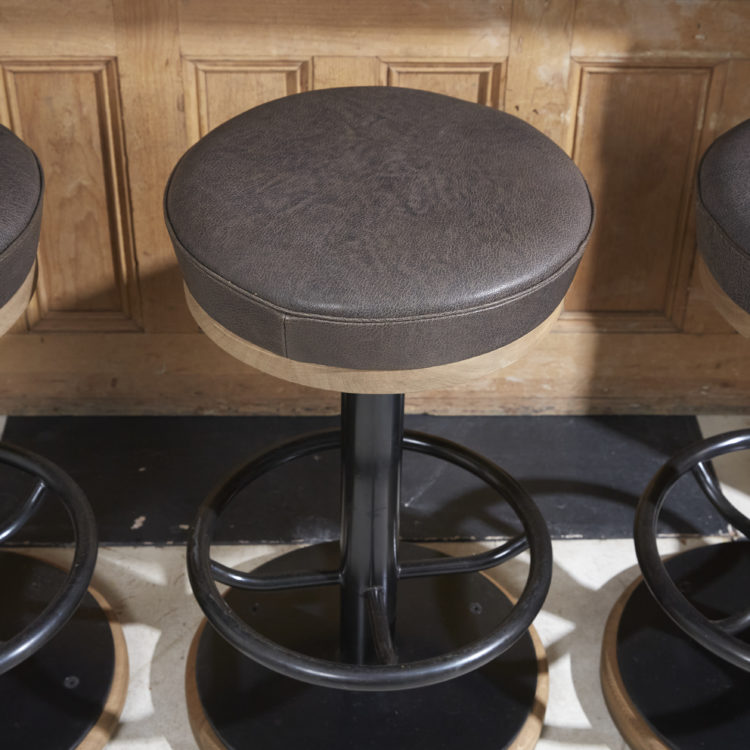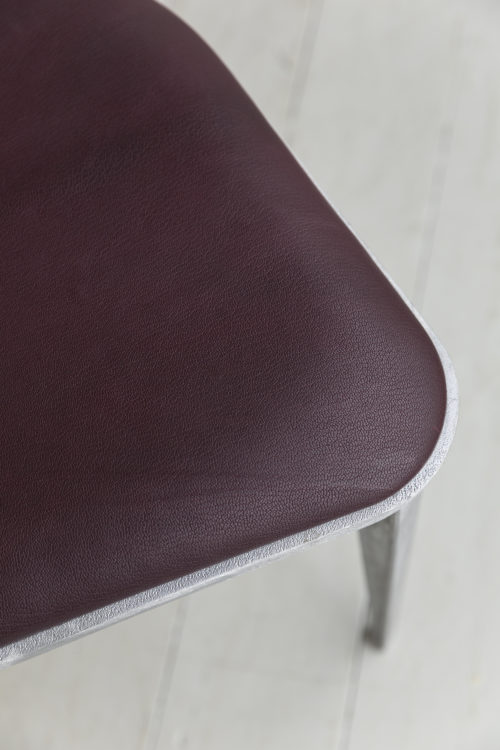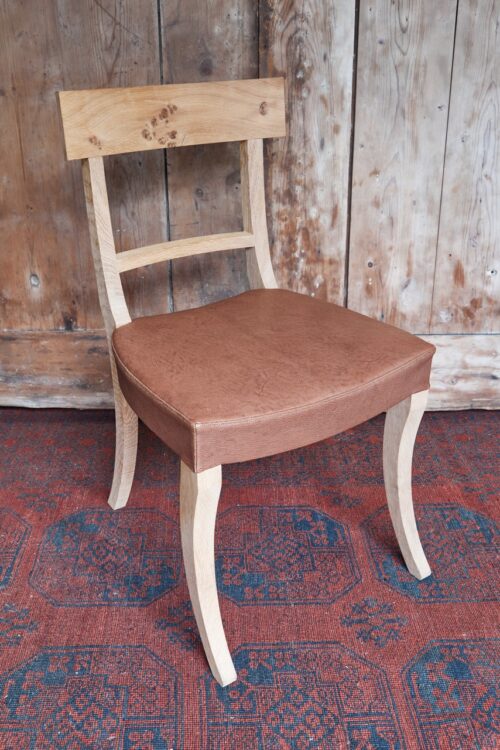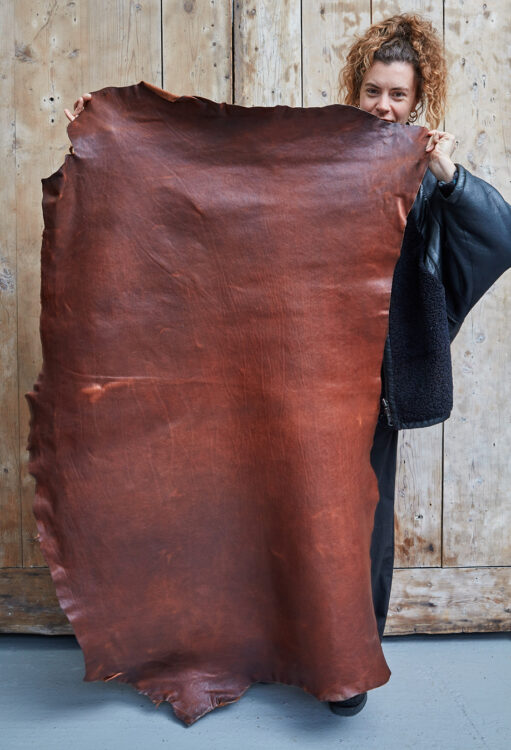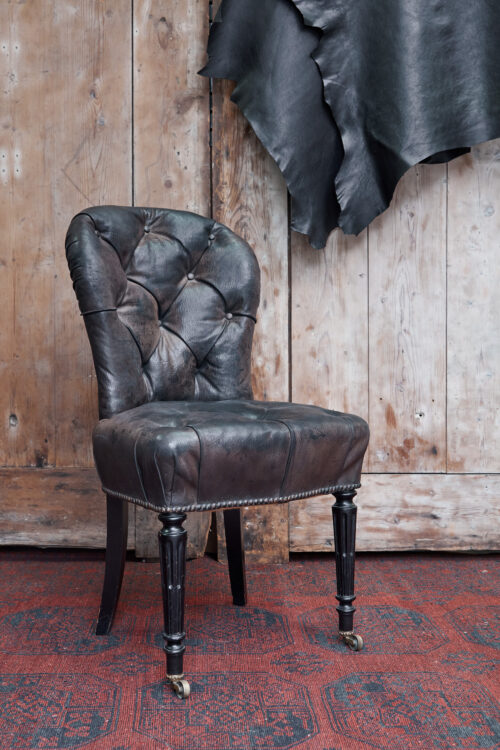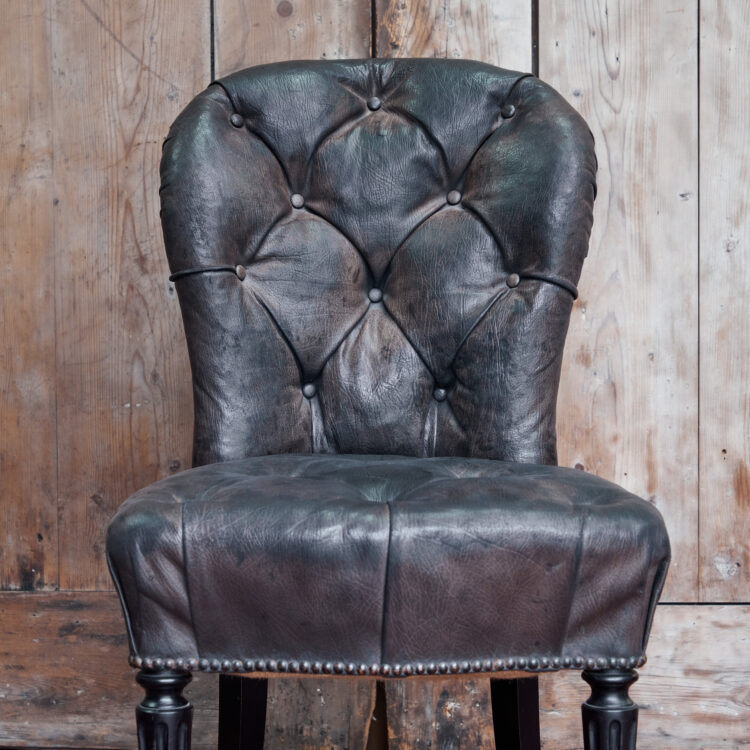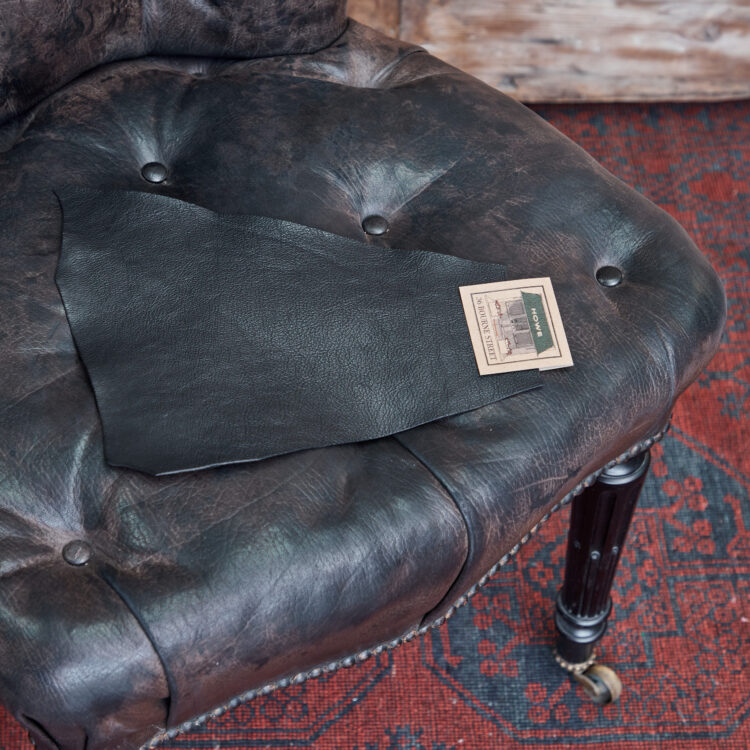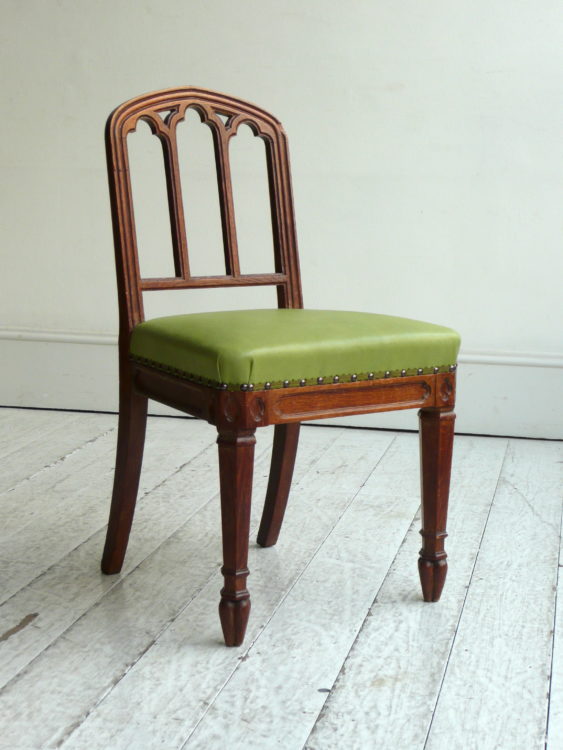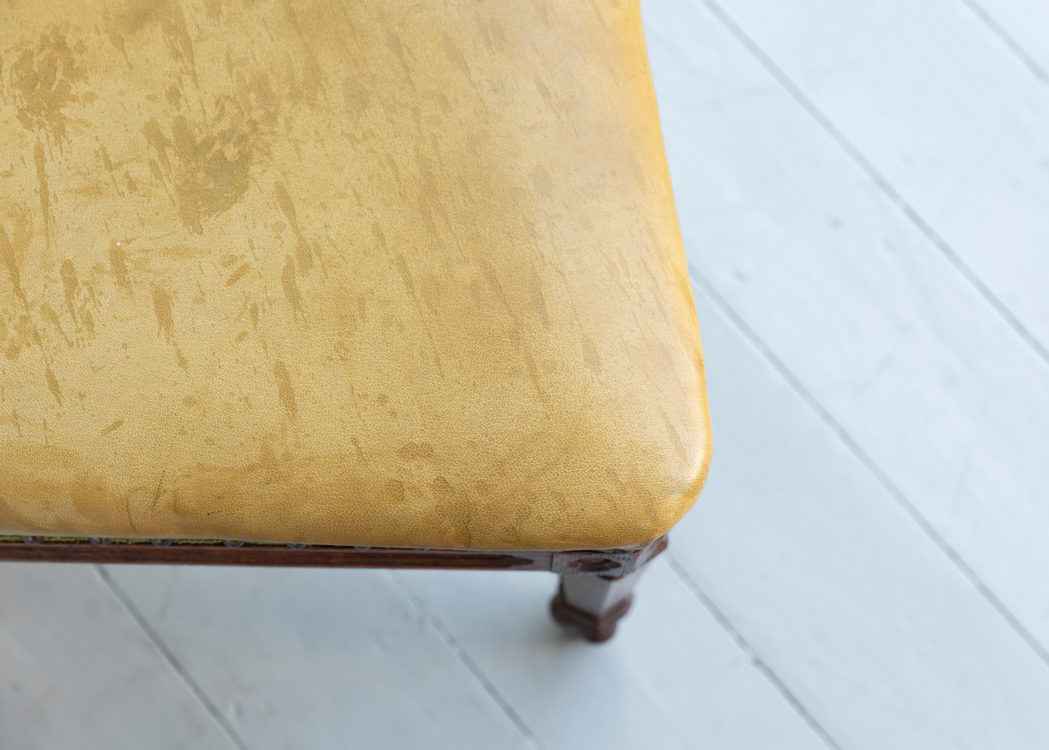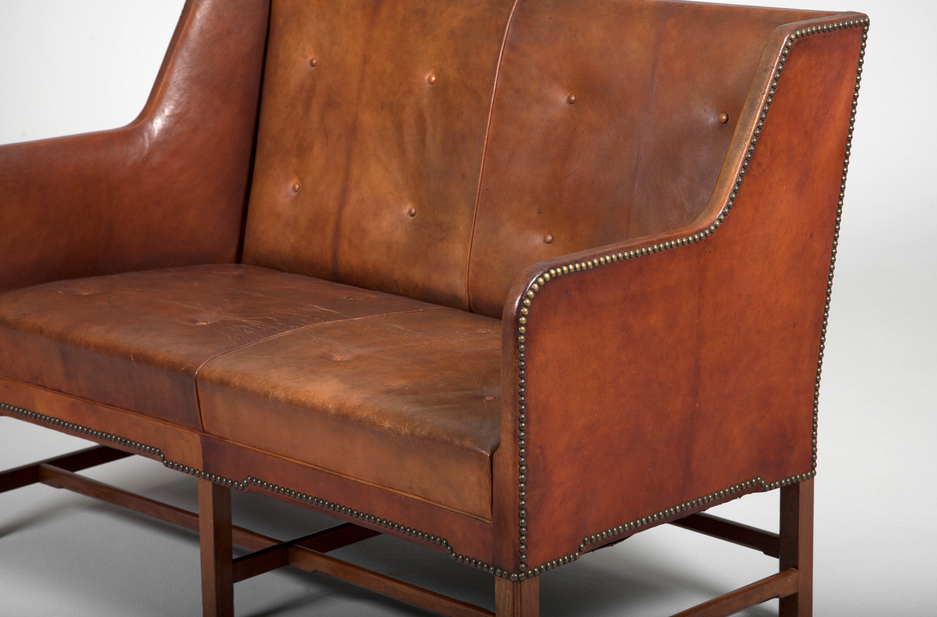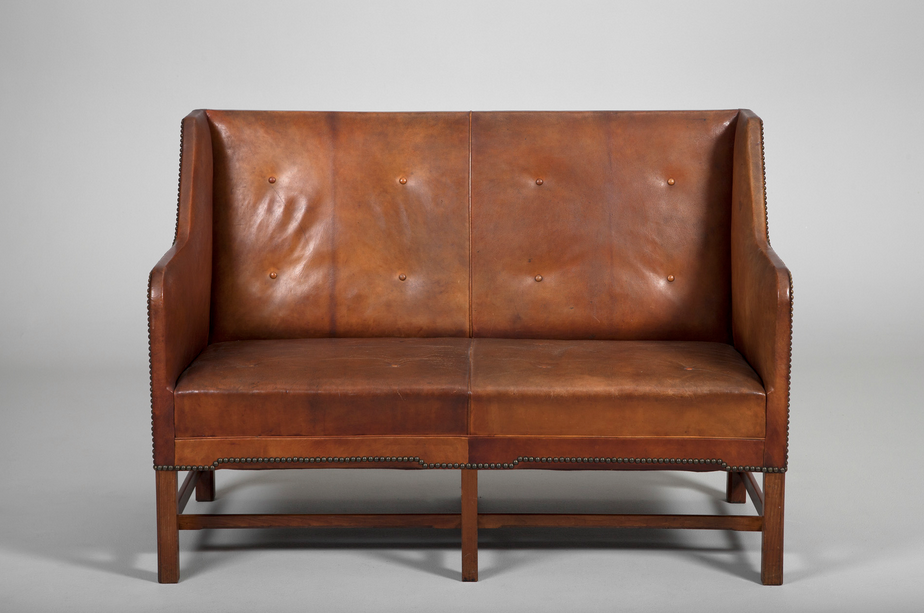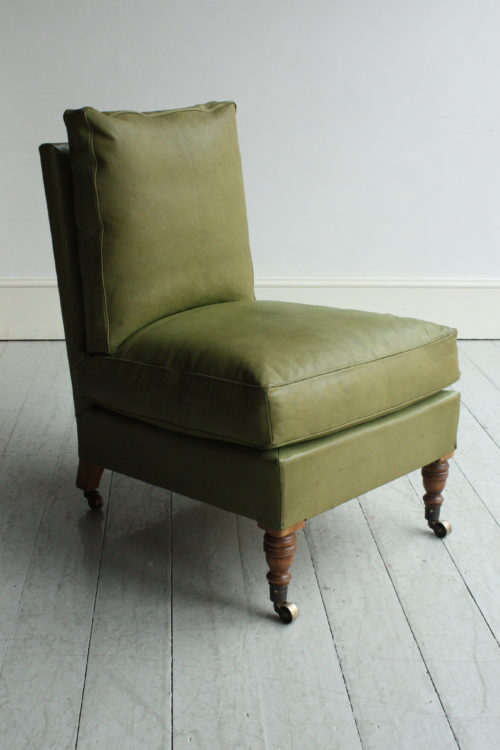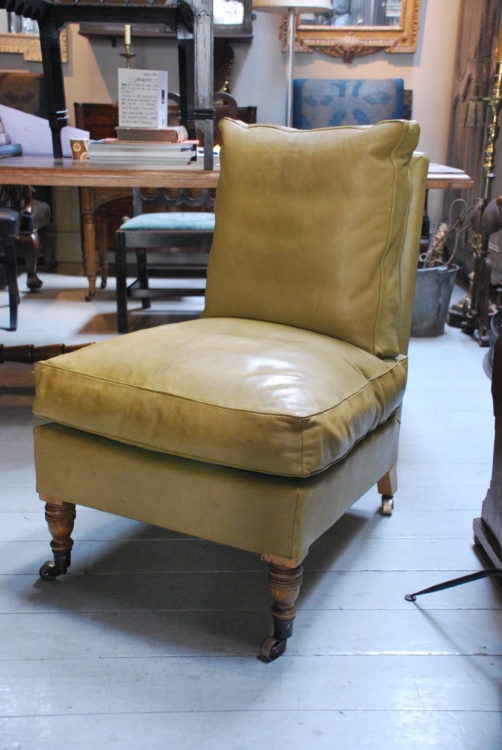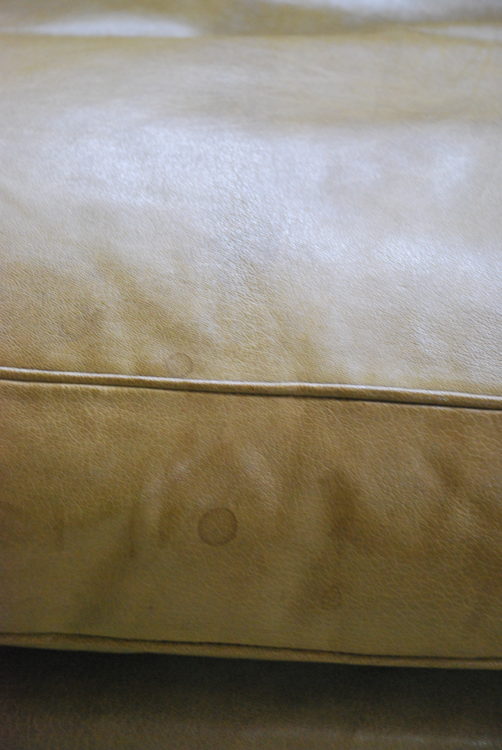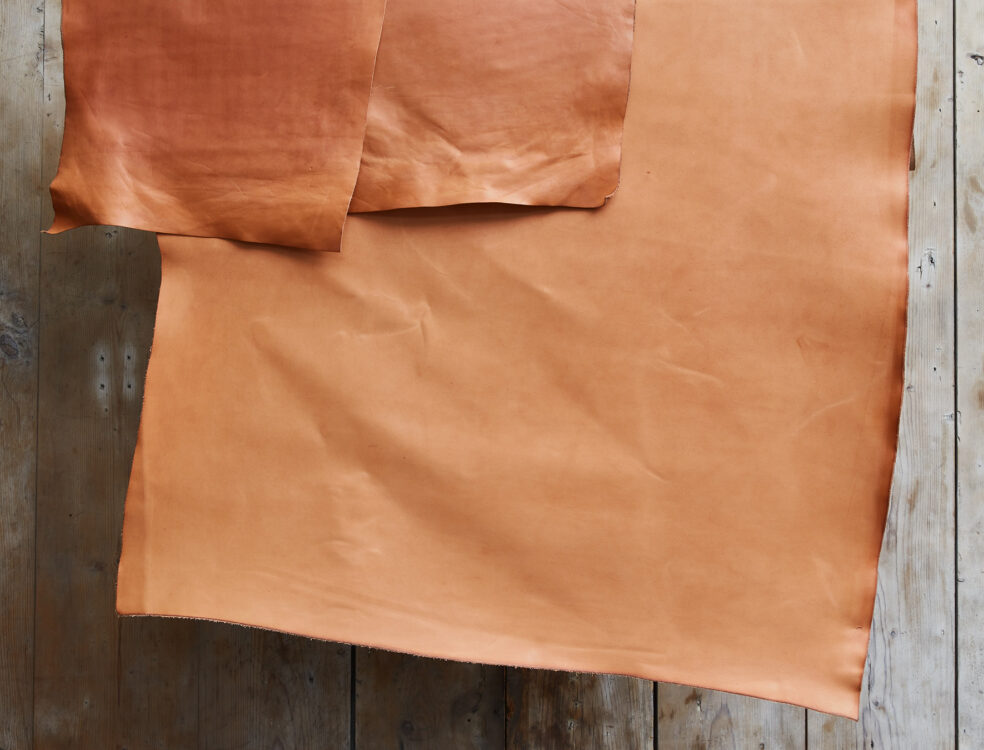Leather Info
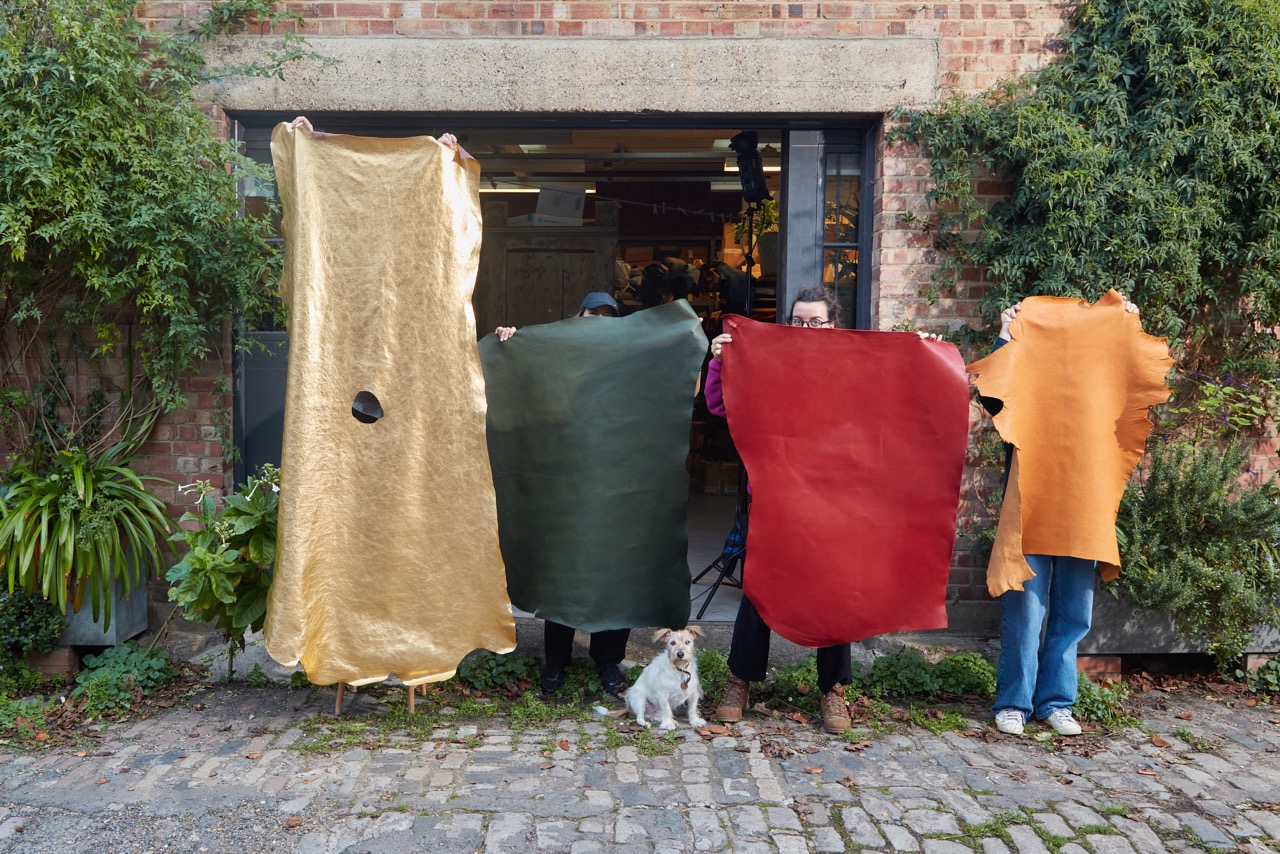
We offer a variety of leathers at Howe, suitable for every upholstery job you could imagine!
Goat Skin
Our Natural Maroc goat skin leather is available in a variety of colours. These skins are much smaller than cow hide as goats are much smaller than cows! The average size of the goat skins is around 8 square foot per piece but they can vary from around 4 to 13 square foot, depending on the size of the goat. By comparison whole cow hides are generally around 50 square foot in size.
Big old Billy goats unsurprisingly provide the largest skins, but they are also the most likely to have gotten into fights and to have sustained insect bites and scratches whilst roaming around the lush scrub land in rural India. These marks are still visible on the leather and are a testament to its honest origin.
We have always loved to use goat skin on larger pieces of upholstery, despite the smaller size of the skins. As the Georgian furniture makers did, and later the Danish midcentury masters such as Kaare Klint, we fully embrace the smaller size restraints of using goat skin leather. With a little more thought and consideration in the planning and upholstery the inevitable seams do not compromise the finished furniture; in fact they can truly enhance its appearance. The varying tone and unique natural marks that occur on each skin result in a subtle patchwork, and with carful placement of the seams the whole effect is quite beautiful! You can see some brilliant examples of panelling in the photos below.
Goatskin is a very durable leather with minimal stretch, whilst also possessing a supple and flexible handle. This makes it ideal for all types of upholstery, such as deep button-tufting, desk and table inlay. Its enduring robust character also makes it particularly popular in high-traffic commercial areas, like hotels and restaurants.
Cow Hide
We sell four different varieties of cow hide leathers: Italian Hide, Pit Tanned, Tuscan Hide and Metallic. These are all larger than the Natural Maroc goatskins allowing for larger panels to be achieved without seams. They vary in stiffness of handle, but are generally slightly thicker than the goatskin, so more suited to simpler shapes that require less flexibility (ie pleating or deep-buttoning).
Our Italian Hide leather is a quarter cow hide. The average size of a piece is 11 square foot in a fairly regular rectangular shape.
Our Pit Tanned and Tuscan Hide leathers are ‘double butts’ meaning, as the name suggests, that it comes from the rear end of the cow which provides beautifully even-textured leather. The pieces are typically slightly larger than the Italian Hide.
The two Metallic leathers we sell are half cow sides which means that long panels are achievable, but the shape of the pieces can be very irregular as they follow the uneven outer edge of the cow skin. They have an average size of 25 square foot.
Character
The character of our leathers differs from type to type, but across the board they all display naturally occurring unique marks and patterns. These can include scratches and blemishes, occasionally the odd small hole, differences in grain texture, spine lines and sometimes a dappling change of colour too.
All of these marks are typical and part and parcel of what real leather looks like – particularly leather like ours that has been traditionally drum-dyed, rather than the quick and disappointing modern method of spraying paint-like colour onto the leather surface, which coats it in a uniform layer and masks the realities of the natural material.
If you want a perfectly uniform and consistent look choose a mass-produced commercially sprayed leather! However, you’ll miss out on the very best part which is the wonderful patina which will accumulate in response to your unique use of the furniture. The accumulation of scratches, oils from your hands, spillages, sunlight and wear will create the sought-after character found on the best antiques!
Ageing
Leather is a strong material and should be lived with, used and enjoyed. In general it’s best to take a relaxed approach and let marks and stains build up to create an overall picture of patination and wear.
If you want a perfectly uniform and consistent look choose a mass-produced commercially sprayed leather!
We choose not to apply any further treatment such as stain resistance which is essentially a plastic coating applied on top. We try to supply our materials with a minimal amount of finishes applied, avoiding unnecessary chemicals.
All leather will naturally mellow and fade with exposure to daylight. The most drastic fading happens where the intensity of light is very strong and exposure occurs over long periods of time.
Contact with water (or other liquids) will mark the leather and over time build a unique patina and weathered look. Be mindful that spills and marks are impossible to remove. Choosing one of our very dark coloured leathers is the simplest strategy if you want to avoid a potential look of heavy patination and marking.
You can see some examples of both sun fade and the build up of genuine patina in the photos below.
